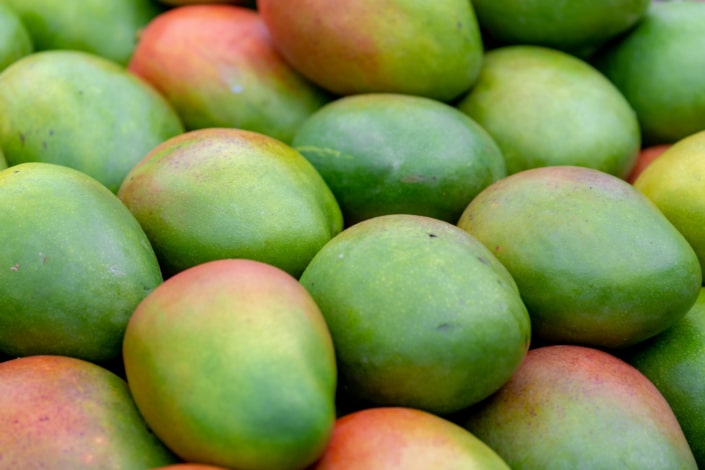Mangoes are considered a true superfood for a reason. Not only do they have particularly tasty and sweet pulp but Mango benefits your health in several ways. Do you know what latex and mangoes have in common? We’ll tell you, among other things, below.
Mangoes are very popular. They impress above all with their aromatic sweetness and versatility. Among other things, mangoes are suitable for salads, jams, and as snacks.
Interesting Facts on Mangoes

Interesting Facts on Mangoes: the Mango Tree
The mango (Mangifera indica) belongs to the genus of subtropical stone fruit and grows mainly in Asia, South America, and Africa. There, it is even considered the king of fruits.
Only ten countries in the world produce more than 80 percent of the entire harvest of mangoes. These countries include India, Mexico, and Egypt.
The mango tree is evergreen, fast-growing, and can reach heights of over 35 meters. The trunk of the tree itself can grow over a meter thick, and even the crown of the tree can reach a diameter of 30 meters in some cases.
In general, the mango tree is particularly popular in subtropical regions. This is due, among other things, to the fact that it can bear fruit for more than 300 years.
Mangos in the Past
As early as about 1,200 B.C., the mango was mentioned as the food of the gods in the Hindu Vedas. These are collections of religious texts of Hinduism, first passed down orally and later written down.
To this day, the mango in Hinduism represents attributes such as strength and longevity. So it is no coincidence that the mango is the national fruit of India.
Distribution of Mango

Distribution of Mango
The mango arrived as early as the 16th century with Portuguese travelers on their way from India to Europe. The first mention of the mango in a European language also dates from this time. Namely, in the travelogue of an Italian from 1510, the mango was mentioned.
Nutrition Facts and Calories
Mangoes are not known as a superfood without reason. Namely, they contain a number of valuable ingredients. You’ve certainly eaten a mango before and been allowed to indulge in its sweetness.
But the delicious taste does not come by chance. The flesh of the mango contains a relatively large amount of sugar and thus not a few calories. Nevertheless, mangoes are considered very healthy. Take a look at our overview table.
| Components | 100 grams of mango |
|---|---|
| Calories | 56 kcal |
| Water | 83 g |
| Fat | 0.4 g |
| Carbohydrates | 12.8 g |
| Protein | 0.8 g |
| Dietary fiber | 1.7 g |
| Potassium | 190 mg |
| Calcium | 10 mg |
| Magnesium | 18 mg |
| Iron | 1.2 g |
| Vitamin B1 | 0.05 g |
| Vitamin B2 | 50 μg |
| Niacin (vitamin B3) | 700 μg |
| Vitamin B6 | 130 μg |
| Vitamin C | 30… |



